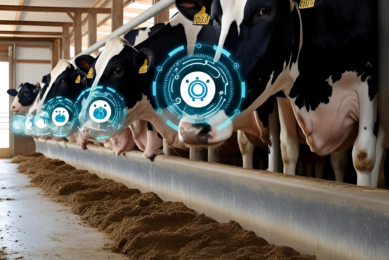Future brings many challenges, especially for aquaculture
According to Belgium-based Inve Nutri-Ad, most market opportunities lie in the ruminant, aqua and poultry industries. At a recently held meeting, the company said it will focus specifically on the growth of its aqua feed additives segment.
Inve Nutri-Ad’s vision for the future was discussed at a recently held meeting in Belgium. Jan van Eys opened the first session by pointing out some issues which are currently reflecting the ruminant feed market. According to van Eys, the ruminant market is a one with great opportunities, especially in China and Japan where milk production per person is increasing. Van Eys said that should every Chinese person drink 1 litre of milk more per year, it would equal the total annual EU milk production. However, the ruminant sector is also a complicated market he said as it is fragmented, diverse, has a complex production process and has non-standardised feeding systems. Van Eys addressed the fact that Inve Nutri-Ad is focusing on the dairy market as this is over 90% of the current sales. He also pointed out that the market for flavours and flavour enhancers is growing as more by-products from the ethanol industry (often with a low palatability) are fed to ruminants.
Return on investment
However, in these difficult times, where cost efficiency is more important than ever, the Return on Investment (ROI) is crucial, says van Eys. He acknowledges that the use of feed additives must be profitable for the farmer in the end and points out that ROI of over 3 is good but we should aim to have a ROI of 5. In the second part of the ruminant presentation, Koen Schwarzer pointed out that opportunities for Inve lie in exploring the role of yeast as immune stimulators, rumen protected nutrients and digestibility enhancers such as botanicals. He said that the company is working on a new product (immune enhancers and mycotoxin inactivator) which will be a combination of yeast cell wall, live yeast, clay minerals and prebiotics. Mycotoxin inactivators are important in the ruminant industry as animals eat a lot of forages and mycotoxins can contaminate the feed during many phases in the feed process, said Monique Baeke in her talk i.e. ruminants are more exposed to mycotoxins than monogastrics. She further pointed out that aflatoxins have a carry-over to milk of 2-6%. It is therefore important that mycotoxins are controlled on dairy farms using mycotoxin deactivators or growth inhibitors.
Feeding the modern chicken
Markus Kenny, Global Head of Nutrition Services at Aviagen was invited to talk about the nutritional challenge we face in feeding the modern broilers.
Kenny pointed out that in 1957 it took 28.2 g of feed to gain 1 g of breast meat. In 2005, it only took 9.4 g to gain 1 g of breast meat. This huge improvement in genetics, which expresses higher feed efficiency and breast meat gain, also means we have to feed the chicken a fully nutritious diet to express this potential. Kenny said that broiler genetics is constantly changing so we need to respond to this in our nutritional approaches as well.
He addresses that responses of the modern genotype to nutrients vary a lot so we cannot say there is a fixed/defined requirement for broilers. He stresses that this message should be communicated to the industry as well in order to retain the 0.2-0.3 points of improvement in FCR every year.
Aquaculture focus
Peter Coutteau, part of the recently formed division Aquaculture Feed Additives explained the huge potential of feed additives in aquafeed. Coutteau addressed some of the current bottlenecks in aquaculture at the moment: limited nutritional knowledge, limited availability of marine ingredients, feed costs and feed efficiency and disease prevention via the feed. Coutteau explained that feed attractiveness is an important issue in shrimp feeding as valuable (expensive) ingredients get lost first and end up in the pond. Attractants which can be used in the feed (to increase feed intake) include water soluble N compounds, nucleotides and specific amino acids.
Coutteau said that the replacement of marine ingredients for carnivorous fish can be a problem. It can lead to nutritional imbalances, reduced palatability (and thus decreased appetite) and a negative effect on the initiation of the digestive process.
Trials indeed show that soybean meal can be digested up to 87%. Compared to a digestibility of 88-90% of fishmeal this number sounds not too bad, but the fish takes much longer to digest the soybean meal!











